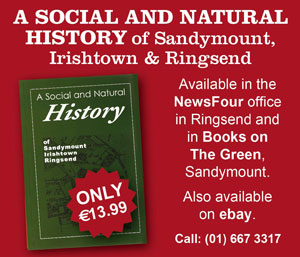
Pictured above and below: Seals at Dun Laoghaire Harbour.
Photos courtesy of Irish Seal Sanctuary.
The first ever species that was protected by a law imposed by government is here for all to see along our coasts and harbours.
The marine mammal known as the grey seal was once a threatened species at the beginning of the last century and its future may have been in jeopardy if not for the UK government prohibiting the hunting and culling of this creature around her channels and seas, which included Ireland’s coasts at the time.
This large mammal is a frequent visitor to our water’s edge and at one particular spot in Dun Laoghaire Harbour these wild but tame creatures are feeding off the surplus fish carcass the Harbour Fish Shop is only too glad to share with their neighbours. Here, it is possible to observe a marine mammal up close and to see that despite its treacherous environment it has a surprisingly pleasant countenance.
The initial law passed to protect the species was abolished a decade after its inception, but the grey seal was again protected in 1976 when the Wildlife Act was established. At present, the International Union for Conservation of Nature (IUCN) have the Grey Seal’s status as ‘least concern’ on their highly regarded Red List of threatened species, and sanctuaries like the Irish Seal Sanctuary (ISS) and Seal Rescue Ireland have no doubt made this a possibility.
Brendan Price, who founded the ISS and says he’s been rearing and releasing seals back into our seas for the past 30 years spoke with NewsFour about why these mammals need saving and sanctuary, despite being protected by law from hunting and culling.
“The species has two peaks in the year when it is at its most vulnerable due to storms in the October months and early in the year after the weaning period and bad fishing. After this, we find them malnourished and skeleton-like,” said Price, who also remarked that the numbers which needed to be saved this year were low due to the lack of storms, when compared to previous years.
The protection of these pinnipeds has come under scrutiny in recent times due to injuries inflicted by them on swimmers at the forty-foot in Sandycove and the assumption that they are the reason why cod stock levels are not replenishing themselves as they should, to the point where cod has been given a ‘vulnerable’ status on the IUCN’s Red List.
It is these perceptions of the grey seal that Price wishes to see researched and for the public to be aware of before they go into the water.
Price was able to get protocols posted at Dublin Bay for long-distance swimmers to be wary of them and also had signs made at Greystones but somehow the wrong information was circulated about them.

Photos courtesy of Irish Seal Sanctuary.
“When the divers go near them they are wearing a protective membrane and don’t feel the bite and then swimmers go in and get bitten,” Price explained. The feeding of the grey seals down at Howth harbour is now illegal and warrants a €3,000 fine imposed by its harbourmaster for anyone caught in the act. Price said the reason for this was due to the unsupervised over-feeding of the seals, which made them fall asleep on the walkways there.
He is also concerned about recent evidence coming through regarding cannibalism and infanticide further up north, where the Royal Society of the Protection of Birds (RSPB) have witnessed attacks. “It was only up until recently that we were able to retrieve information on postmortems because before we were always told that it was natural causes, so now we were seeing wounds which would indicate large predators like a large bull [male grey seal].”
Monitoring the grey seal movements is a challenge that the ISS are hoping to accomplish. Wildlife photographer Ronan Browne is helping the ISS with this, not only trying to get shots of his own but he has also been in contact with the yacht clubs and the underwater council in the area and plans to retrieve vital information when their season starts in May.
The seals are site loyal according to Price, but when the fish shop shuts early on the Saturday for the whole weekend, he wants to know where they go to then. “Everyone around the bay is familiar with these animals but they aren’t so aware of the animals’ development and we have 350,000 people who live close to where the seals live, so we have a real challenge here to observe this marine species.”
If you would like to volunteer, watch the documentary, Lanugo, about grey seals that Price helped produce or if you have any information you think would be relevant to our own native species, visit: irishsealsanctuary.org or you can ring the number for the public 087-3245423.
By Paul Carton



